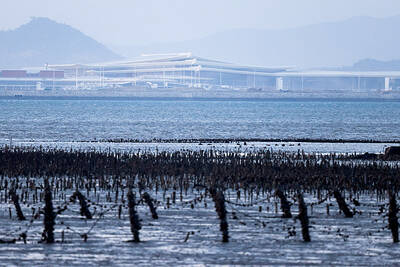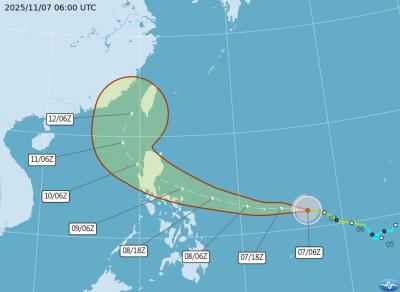Relatives of victims of the 228 Massacre yesterday criticized former premier Hau Pei-tsun (郝柏村) over his comments that only about 500 people — instead of the commonly seen estimates of between 20,000 and 30,000 — were killed during the massacre, calling it a baseless rewriting of history.
“What Hau said in a letter to the editor [published in the Chinese-language United Daily News on Tuesday] about the 228 Massacre is unacceptable, because his statement was seriously biased, and was a complete betrayal of historic facts,” said Democratic Progressive Party Legislator Lee Chun-yi (李俊俋), who accompanied victims’ families in a news conference at the legislature.
“What happened then created pain that has forever been buried in the hearts of the victims’ families, and what Hau did was tantamount to rubbing salt into their wounds. [His words] could trigger ethnic tensions in the country,” Lee said.
In his op-ed, Hau said textbooks were mistaken in their claims that more than 10,000 people were killed during the 228 Massacre, adding that according to his understanding, only a little more than 500 people were killed in the crackdown on the uprising.
Lin Li-tsai (林黎彩), the daughter of a 228 victim and the secretary-general of the 228 Care Association, took out a copy of the Research Report on the 228 Incident published by the Executive Yuan in 1991 and called Hau a liar.
“The official report says that between 18,000 and 28,000 people were killed during the massacre — the research was conducted by the Executive Yuan, and the report was published by the Executive Yuan,” Lin told the news conference. “And you, Hau Pei-tsun, were the premier at the time.”
“Are you trying to deny something that the Executive Yuan under your leadership had concluded?” she asked.
Another victim’s relative, Yang Chen-jung (楊振榮) said President Ma Ying-jeou (馬英九) was using the 228 Massacre to make political gains, adding that he should show some real compassion instead.
“Four years ago, you [Ma] said you would dig out all the facts about the tragedy. Well, four years later, serving as both the head of state and of the ruling KMT, [what have you done]? What really happened, who was really killed and where are the missing people? These all still remain a mystery,” Yang said.
The 228 Massacre refers to an nationwide uprising against the Chinese Nationalist Party (KMT) regime that broke out on Feb. 27, 1947, two years after the KMT took over Taiwan, because of government corruption and economic hardships under the KMT.
At first, those fighting the KMT won the upper hand. However, the uprising was violently crushed when the regime sent troops from China.
Since the majority of the population in Taiwan at the time were native Taiwanese, while the ruling elite and soldiers were mostly from China, the massacre triggered ethnic tensions and it has sometimes been considered an ethnic conflict.

The Central Weather Administration (CWA) today issued a sea warning for Typhoon Fung-wong effective from 5:30pm, while local governments canceled school and work for tomorrow. A land warning is expected to be issued tomorrow morning before it is expected to make landfall on Wednesday, the agency said. Taoyuan, and well as Yilan, Hualien and Penghu counties canceled work and school for tomorrow, as well as mountainous district of Taipei and New Taipei City. For updated information on closures, please visit the Directorate-General of Personnel Administration Web site. As of 5pm today, Fung-wong was about 490km south-southwest of Oluanpi (鵝鑾鼻), Taiwan's southernmost point.

UNILATERAL MOVES: Officials have raised concerns that Beijing could try to exert economic control over Kinmen in a key development plan next year The Civil Aviation Administration (CAA) yesterday said that China has so far failed to provide any information about a new airport expected to open next year that is less than 10km from a Taiwanese airport, raising flight safety concerns. Xiamen Xiangan International Airport is only about 3km at its closest point from the islands in Kinmen County — the scene of on-off fighting during the Cold War — and construction work can be seen and heard clearly from the Taiwan side. In a written statement sent to Reuters, the CAA said that airports close to each other need detailed advanced

Tropical Storm Fung-Wong would likely strengthen into a typhoon later today as it continues moving westward across the Pacific before heading in Taiwan’s direction next week, the Central Weather Administration (CWA) said. As of 8am, Fung-Wong was about 2,190km east-southeast of Cape Oluanpi (鵝鑾鼻), Taiwan’s southernmost point, moving westward at 25kph and possibly accelerating to 31kph, CWA data showed. The tropical storm is currently over waters east of the Philippines and still far from Taiwan, CWA forecaster Tseng Chao-cheng (曾昭誠) said, adding that it could likely strengthen into a typhoon later in the day. It is forecast to reach the South China Sea

Almost a quarter of volunteer soldiers who signed up from 2021 to last year have sought early discharge, the Legislative Yuan’s Budget Center said in a report. The report said that 12,884 of 52,674 people who volunteered in the period had sought an early exit from the military, returning NT$895.96 million (US$28.86 million) to the government. In 2021, there was a 105.34 percent rise in the volunteer recruitment rate, but the number has steadily declined since then, missing recruitment targets, the Chinese-language United Daily News said, citing the report. In 2021, only 521 volunteers dropped out of the military, the report said, citing